The arteries are responsible for taking oxygen-rich blood from the heart to the brain. An AVM is an abnormal connection between arteries and veins.
 Arteriovenous Malformations For Parents Nemours Kidshealth
Arteriovenous Malformations For Parents Nemours Kidshealth
Arteries and veins that fail to develop correctly form a cluster that prevents blood from flowing to nearby tissue.

What is avm of the brain. A brain arteriovenous malformation AVM is a tangle of abnormal blood vessels connecting arteries and veins in the brain. In a normal brain oxygen enriched blood from the heart travels in sequence through smaller blood vessels going from arteries to arterioles and then capillaries. However a bleeding AVM in the brain haemorrhagic stroke is a medical emergency and requires immediate attention.
An arteriovenous malformation AVM is a congenital disorder present from birth characterized by a complex tangled web of arteries and veins in which there is a short circuit and high pressure due to arterial blood flowing rapidly in the veins. Existing studies reporting the risk of surgery for brain arteriovenous malformations AVMs are often biased by the exclusion of patients not offered surgery. Veins carry the oxygen-depleted blood back to the lungs and heart.
An AVM is a tangle of abnormal and poorly formed blood vessels arteries and veins. The arteries are responsible for taking oxygen-rich blood from the heart to the brain. Cerebral arteriovenous malformation Arteriovenous malformation is an abnormal connection between arteries and veins bypassing the capillary system.
An arteriovenous malformation AVM is a congenital blood vessel defect that changes the way blood circulates though a particular area in the brain. These occur on the cortical surface deep into the brainstem thalamus or basal ganglia and within the dural space. A brain arteriovenous malformation AVM is a tangle of abnormal blood vessels connecting arteries and veins in the brain.
In this study we examine the risk of surgery including cases excluded from surgery because of the high surgical risk. Brain Arteriovenous Malformations AVM What is an AVM. An AVM is a tangled mesh of abnormal blood vessels directly connecting arteries to veins in the brain.
This is the most common brain vascular malformation. Arteries are responsible for taking oxygen-rich blood from the heart to the brain. The connection becomes tangled.
The AVM may also require a combination of treatments. AVM stands for Arteriovenous Malformation. Arteriovenous malformations are most commonly of prenatal origin.
A brain AVM disrupts this vital process. The biggest concern related to AVMs is that they will cause uncontrolled bleeding or hemorrhage. An AVM may occur in the brain brainstem or spinal cord.
It consists of a tangle of abnormal vessels connecting arteries and veins with no normal intervening brain tissue. AVMs are an abnormal connection between the arteries and veins in the human brain. AVMs can occur throughout the body and brain AVMs may be particularly harmful.
An AVM can form almost anywhere in the brain brainstem or spinal cord but they are commonest in the main cerebral hemispheres. This vascular anomaly is widely known because of its occurrence in the central nervous system usually cerebral AVM but can appear in any location. An arteriovenous malformation AVM is a group of blood vessels that are abnormally interconnected with one another.
Arteriovenous malformations AVMs are defects of the brains circulatory system that are generally believed to arise during embryonic or fetal development. AVMs can occur anywhere in the body. Blood flows too quickly from the arteries and pushes on the walls of the veins.
Treatment for a Cerebral Arteriovenous Malformation. AVMs form accidentally prior to birth. Fewer than 4 percent of AVMs hemorrhage but those that do can have severe even fatal effects.
True arteriovenous malformation AVM. In this procedure a thin flexible tube called a catheter is guided to the AVM to close. The walls weaken and become narrow.
Endovascular embolization is used for arteriovenous malformations deep in the brain or spinal cord tissue. An arteriovenous malformation AVM is an abnormal tangle of blood vessels connecting arteries and veins which disrupts normal blood flow and oxygen circulation. Veins carry the oxygen-depleted blood back to the lungs and heart.
Brain AVMs are of special concern because of the damage they cause when they bleed. They have a higher rate of bleeding than normal vessels. Those that form in the brain or close to the spinal cord called neurological AVMs are most likely to have long-term effects.
Your childs treatment will depend on their own situation. Normally oxygenated blood is pumped by the heart through branching tubes called arteries to the brain where it enters a fine network of tiny vessels called capillaries. Because of their structure another term commonly used to describe AVM is arteriovenous fistula Getty Images Westend61.
 Arteriovenous Malformations Of The Brain Nejm
Arteriovenous Malformations Of The Brain Nejm
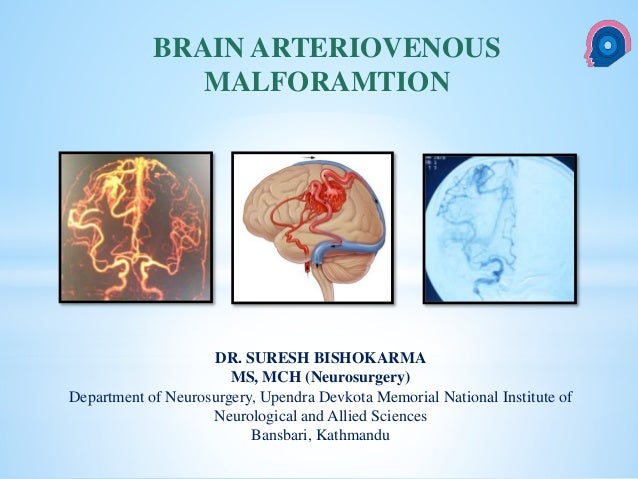 Brain Arteriovenous Malformation
Brain Arteriovenous Malformation
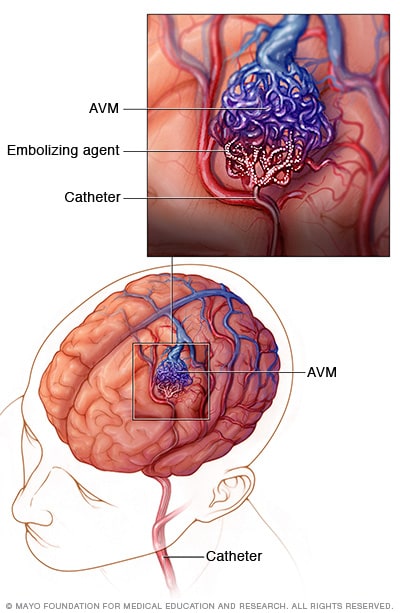 Brain Avm Arteriovenous Malformation Diagnosis And Treatment Mayo Clinic
Brain Avm Arteriovenous Malformation Diagnosis And Treatment Mayo Clinic
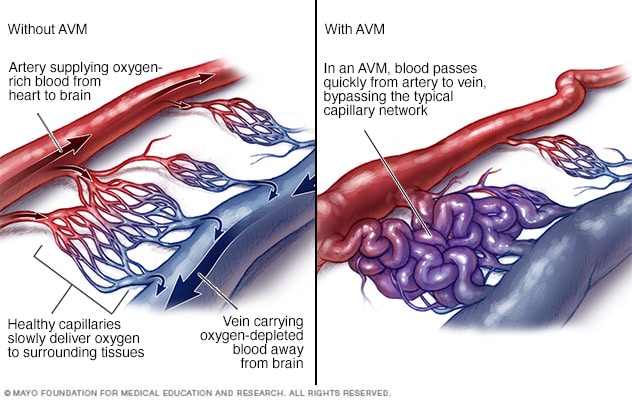 Brain Avm Arteriovenous Malformation Symptoms And Causes Mayo Clinic
Brain Avm Arteriovenous Malformation Symptoms And Causes Mayo Clinic
 Arteriovenous Malformation Or Avm
Arteriovenous Malformation Or Avm
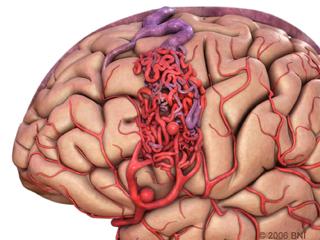 Brain Arteriovenous Malformations Avms Baylor Medicine
Brain Arteriovenous Malformations Avms Baylor Medicine
 Arteriovenous Malformation Avm Youtube
Arteriovenous Malformation Avm Youtube
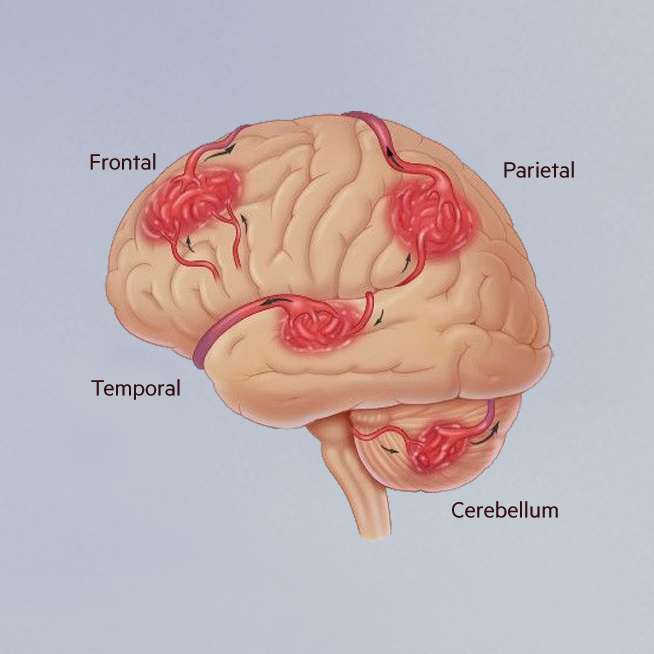 About Avm Brain Aneurysm Foundation
About Avm Brain Aneurysm Foundation
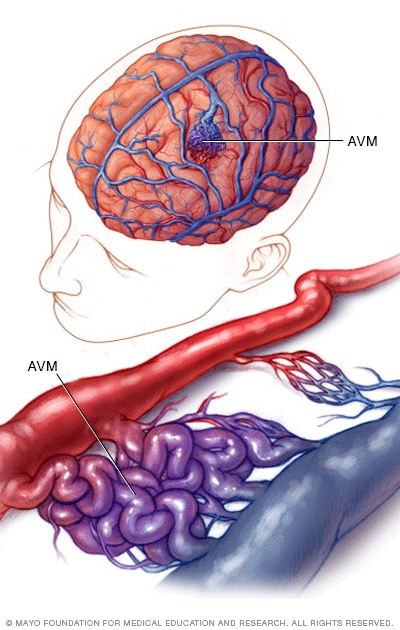 Brain Avm Arteriovenous Malformation Symptoms And Causes Mayo Clinic
Brain Avm Arteriovenous Malformation Symptoms And Causes Mayo Clinic
 5 Cerebral Arteriovenous Malformations Avms And Dural Arteriovenous Fistulas Davfs Radiology Key
5 Cerebral Arteriovenous Malformations Avms And Dural Arteriovenous Fistulas Davfs Radiology Key
 Cerebral Arteriovenous Malformation Wikipedia
Cerebral Arteriovenous Malformation Wikipedia
 Avm Arteriovenous Malformation Braininjury Explanation Com
Avm Arteriovenous Malformation Braininjury Explanation Com
Cerebral Arteriovenous Malformations
 Brain Arteriovenous Malformation Brain Avm Bavm Radiology
Brain Arteriovenous Malformation Brain Avm Bavm Radiology